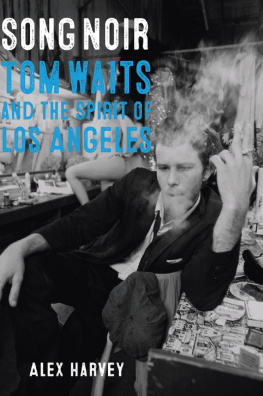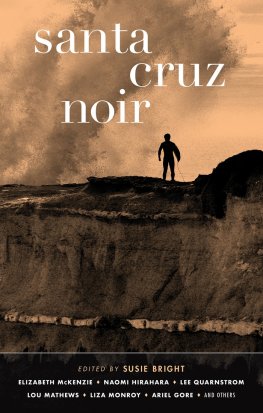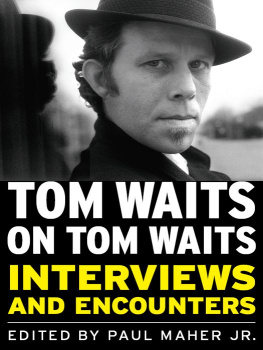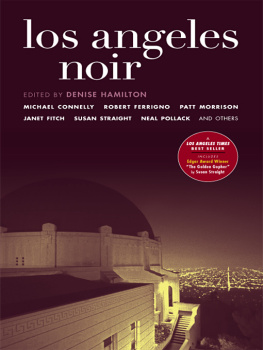The REVERB series looks at the connections between music, artists and performers, musical cultures and places. It explores how our cultural and historical understanding of times and places may help us to appreciate a wide variety of music, and vice versa.
reverb-series.co.uk
SERIES EDITOR: JOHN SCANLAN
Already published
The Beatles in Hamburg
IAN INGLIS
Brazilian Jive: From Samba to Bossa and Rap
DAVID TREECE
Easy Riders, Rolling Stones: On the Road in America, from Delta Blues to 70s Rock
JOHN SCANLAN
Five Years Ahead of My Time: Garage Rock from the 1950s to the Present
SETH BOVEY
Gypsy Music: The Balkans and Beyond
ALAN ASHTON-SMITH
Heroes: David Bowie and Berlin
TOBIAS RTHER
Jimi Hendrix: Soundscapes
MARIE-PAULE MACDONALD
The Kinks: Songs of the Semi-Detached
MARK DOYLE
Neil Young: American Traveller
MARTIN HALLIWELL
Nick Drake: Dreaming England
NATHAN WISEMAN-TROWSE
Peter Gabriel: Global Citizen
PAUL HEGARTY
Remixology: Tracing the Dub Diaspora
PAUL SULLIVAN
Song Noir: Tom Waits and the Spirit of Los Angeles
ALEX HARVEY
Sting: From Northern Skies to Fields of Gold
PAUL CARR
Tango: Sex and Rhythm of the City
MIKE GONZALEZ AND MARIANELLA YANES
Van Halen: Exuberant California, Zen Rocknroll
JOHN SCANLAN
For Joey
Published by Reaktion Books Ltd
Unit 32, Waterside
4448 Wharf Road
London N1 7UX, UK
www.reaktionbooks.co.uk
First published 2022
Copyright Alex Harvey 2022
All rights reserved
No part of this publication may be reproduced, stored in a retrieval system, or transmitted, in any form or by any means, electronic, mechanical, photocopying, recording or otherwise, without the prior permission of the publishers
Page References in the Photo Acknowledgements and
Index Match the Printed Edition of this Book.
Printed and bound in Great Britain by
TJ Books Ltd, Padstow, Cornwall
A catalogue record for this book is available from the British Library
eISBN 978 1 78914 664 6
Contents

Dukes Coffee Shop and the Tropicana Motel, Santa Monica Blvd, West Hollywood, c. 1980s; Waitss infamous place of residence during the 1970s.
Introduction:
Crawling down Cahuenga
I really became a character in my own story. Id go out at night, get drunk, fall asleep underneath a car. Come home with leaves in my hair, grease on the side of my face, stumble into the kitchen, bang my head on the piano and... chronicle my own demise and the parade of horribles that lived next door.
Tom Waits, 1982
T hese days the nearest any fan can get to the presence of Tom Waits is the Crawling down Cahuenga tour, an annual pilgrimage around the places in Los Angeles associated with the legendary Californian singer-songwriter. Waits has not performed a full public concert for over a decade and left Los Angeles back in 1984. However, as such a fan-driven heritage trip indicates, Waits is intimately associated with the citys identity and history. Namechecking a line from the title track of his album of 1980, Heartattack and Vine, the Crawling down Cahuenga tour ushers devotees round sites of interest like Canters late-night deli on Fairfax Avenue, which Waits frequented, or Sunset Sound studios, where he recorded his albums in the 1970s and 80s. The music writer David Smay organizes the tour to underline LAs central importance for Waits: hes really entwined with the city in a way that few musicians are. Obviously, a lot of musicians came to LA and started their careers here. Not that many wrote about Los Angeles the way he wrote about it and not the parts of LA hes writing about.
Song Noir examines the formative first decade of Tom Waitss career, when he lived, wrote and recorded nine albums in Los Angeles, from his soft, folk-inflected debut, Closing Time (1973), to the radically abrasive, surreal Swordfishtrombones (1983). Waits was able to mine an extraordinarily rich seam of the citys lowlife locations, characters and noir associations. He let the city feed and nurture his dark imagination. In response, Waits created a body of work that has helped define the sense of LA as a profoundly unsettling urban experience; a city of extremes; a site of dreams and violence, yearning and despair. At the very outset of Waitss career, back in the early 1970s, Los Angeles represented a wealth of musical and cultural influences that he could absorb and reflect in his songwriting:
Youd still hear music on the street. There were still panhandlers and buskers on the street in those days. I used to go down to a place called Ernie Franciss Parisian Room. You could see Redd Foxx down there or Jimmy Witherspoon, the blues singer. Shellys Manne-Hole was still up on Cahuenga by the news-stand. I used to go out to the Palomino and hear Jerry Lee Lewis. Captain Beefheart was playing at the Golden Bear in Huntington Beach. Richard Pryor was playing clubs in those days. Taj Mahal played at a place called the Ash Grove. There was a whole rockabilly scene back then. Levi and the Rockats. There was a gospel scene. There was Musso and Francos Grill [sic], the Nuart Theatre, the Cinerama Dome, the Ivar Theatre, Canters Deli, The Pantry, Felipes, Wallachs Music City... was a big music store on Sunset and Vine, The Continental Club was out in Silverlake; that was a big Latin club. I used to go there. Schwabs Drugstore was still around. MacArthur Park was on Sixth and Alvarado. I remember the summer they drained that lake in MacArthur Park. They found countless skeletal
Song Noir looks at how Waits combined these contemporary Los Angeles experiences with the spoken idioms of Beat writers such as Jack Kerouac and Charles Bukowski. Drawing on the legacy of jazz-blues rhythms, he explored the citys literary and film noir traditions to create his own powerful, hallucinatory dreamscapes. As a young songwriter in LA, Waits learned to mix the domestic with the mythic. He turned his quotidian, autobiographical details into something more disturbing and emblematic. The result was a vision of Los Angeles as the warped, beating heart of his nocturnal explorations: an American nightscape which resembled the warm, dark compulsion of narcotics. For much of his time in LA, Waits chose to live in the Tropicana Motel. This unsanitary West Hollywood motel was his literal and metaphorical home, somewhere which was hardly a place of rest but, instead, a location where Waits could set his personal preoccupations within the rhythms of the citys seedy underbelly. William Burroughs, sent by Rolling Stone in 1980, captured its decayed, noir ambience. There is a kidney shaped swimming pool in the courtyard. On the patio are rusty metal tables, deck chairs, palms and banana trees: a rundown Raymond Chandler set from the 1950s. One expects to find a dead man floating in the pool one morning.











